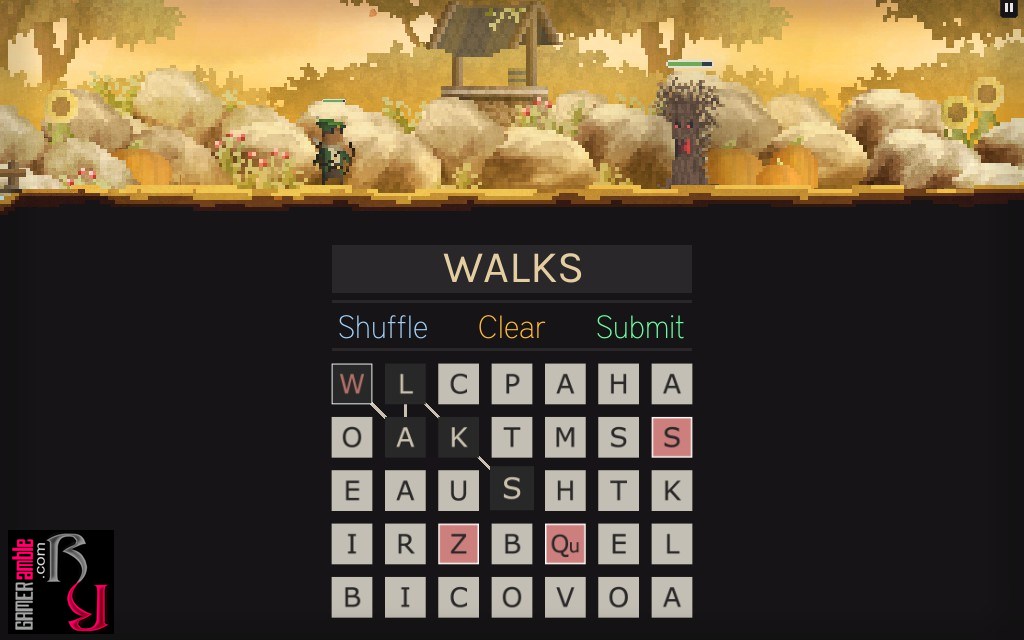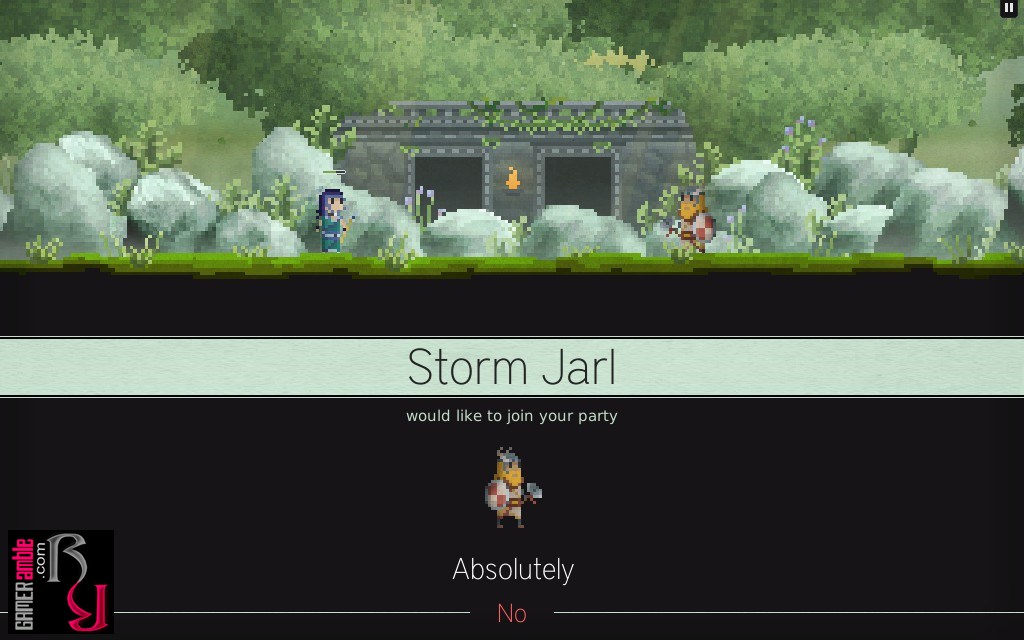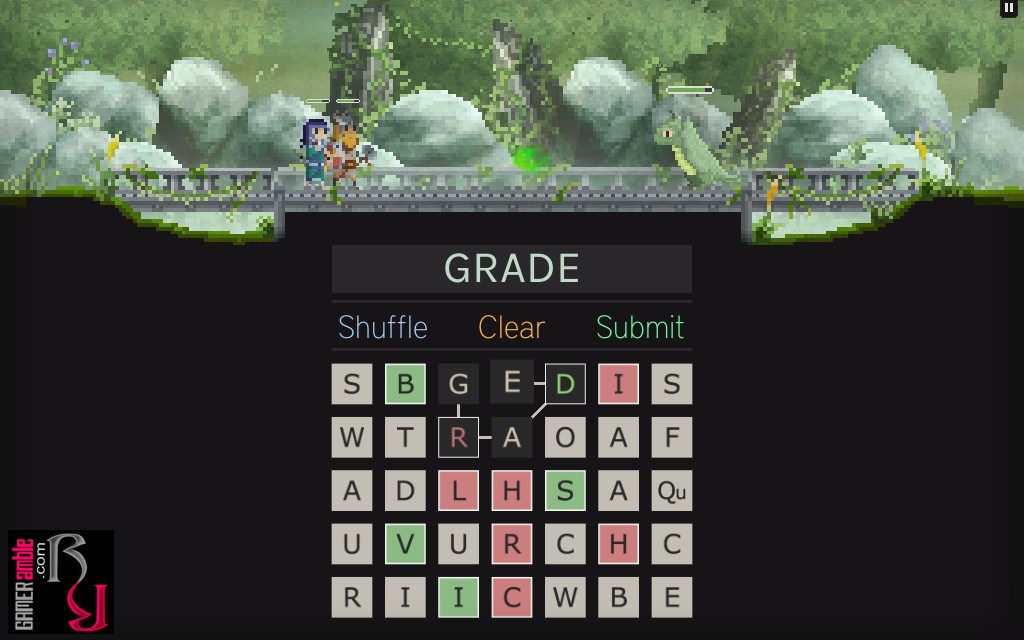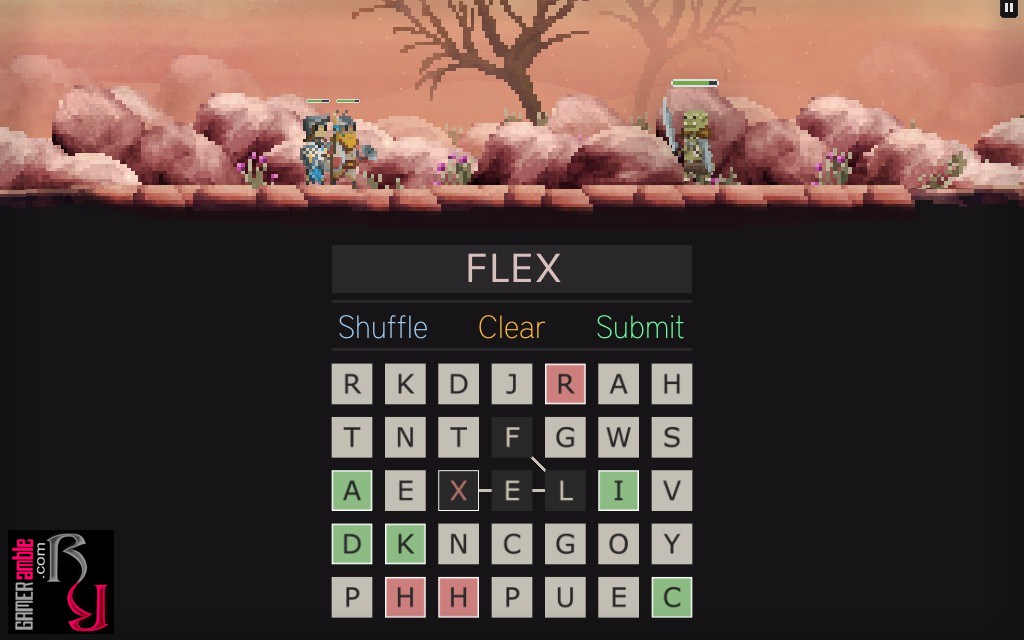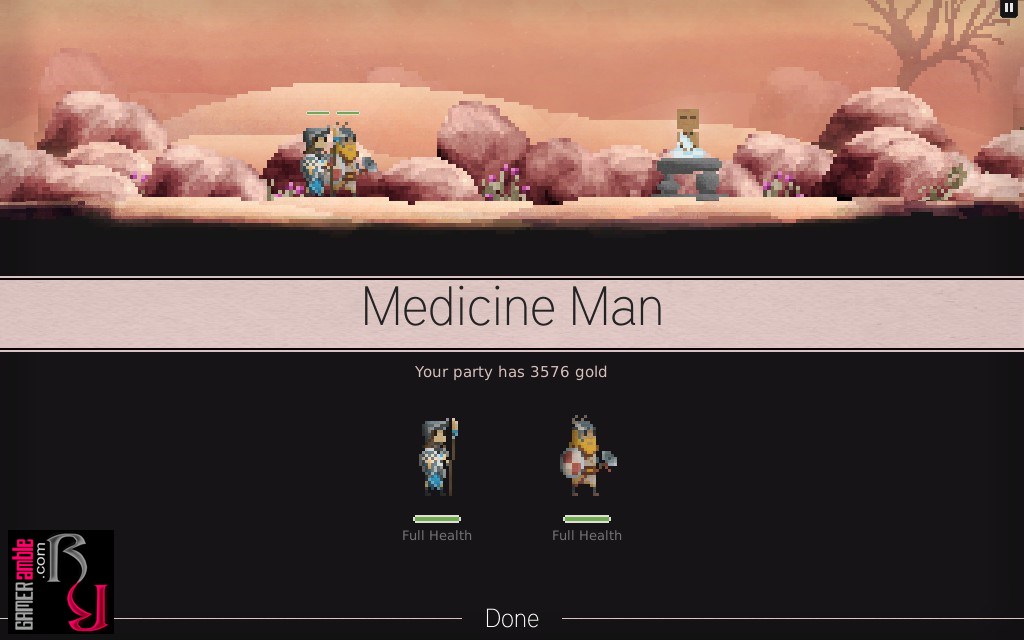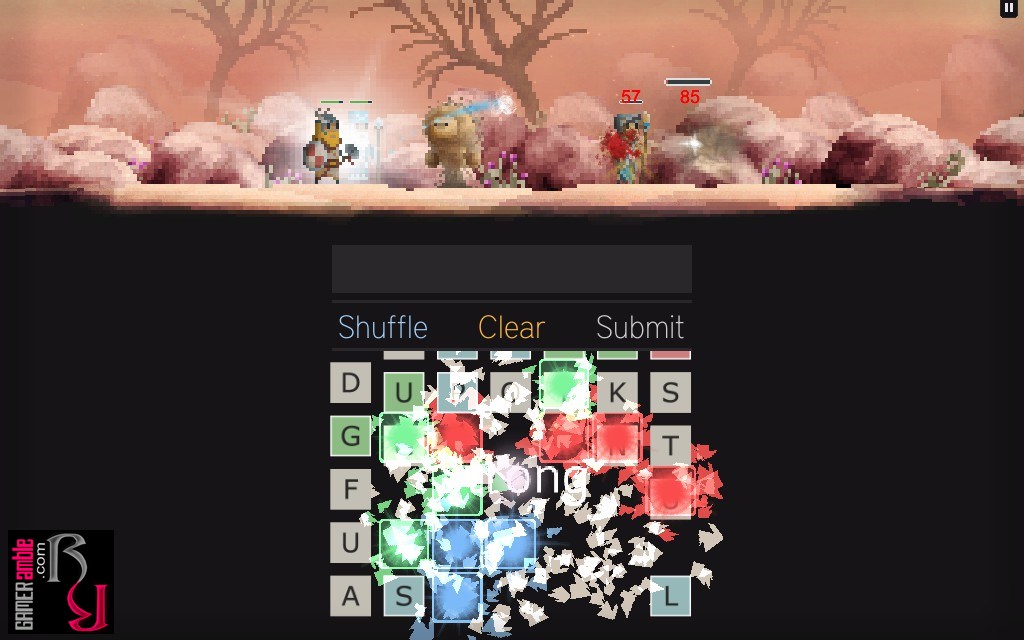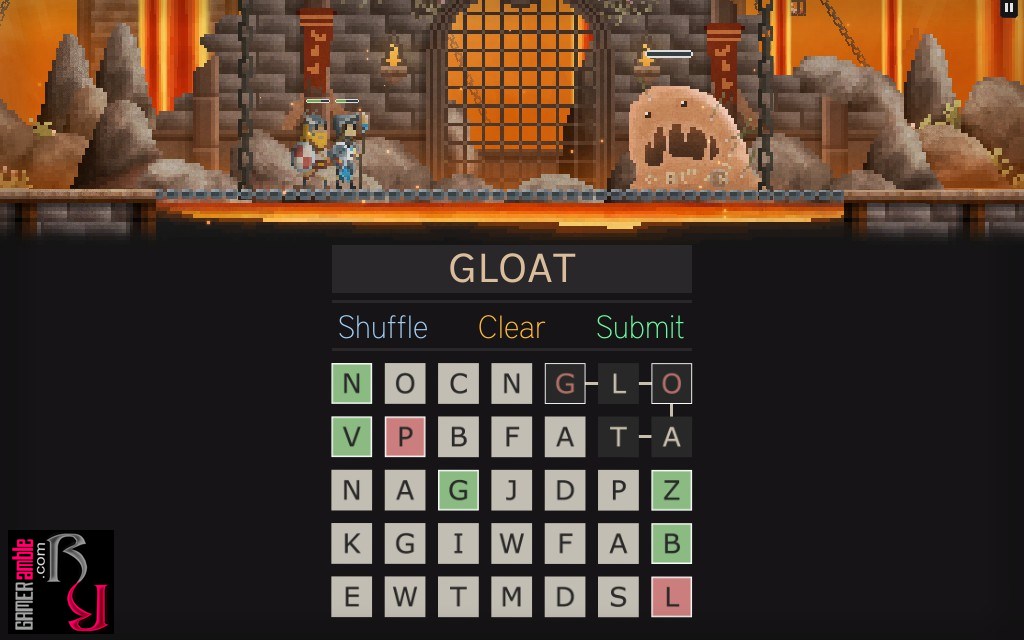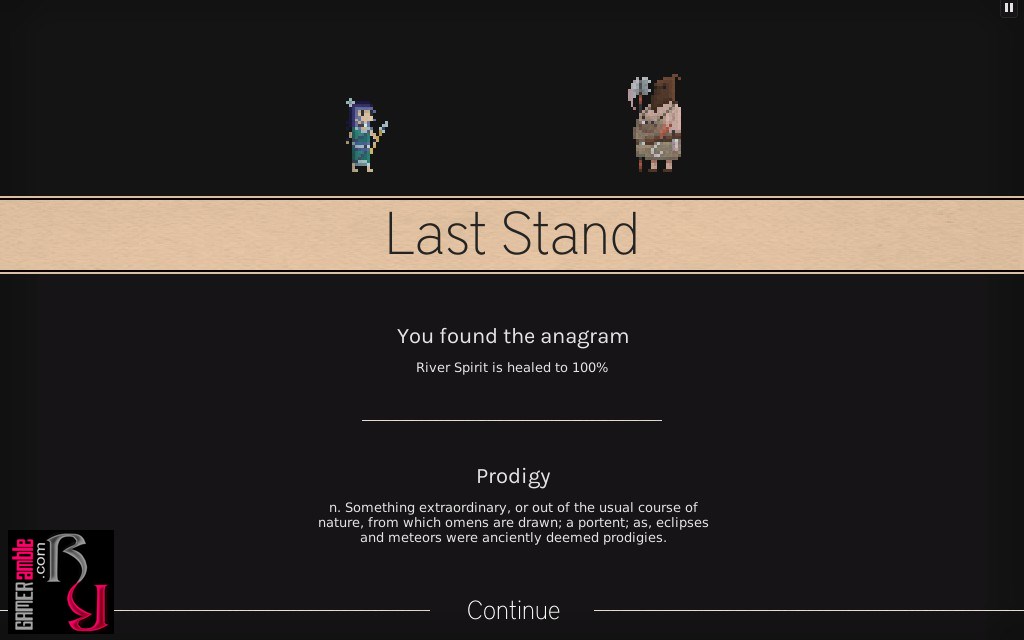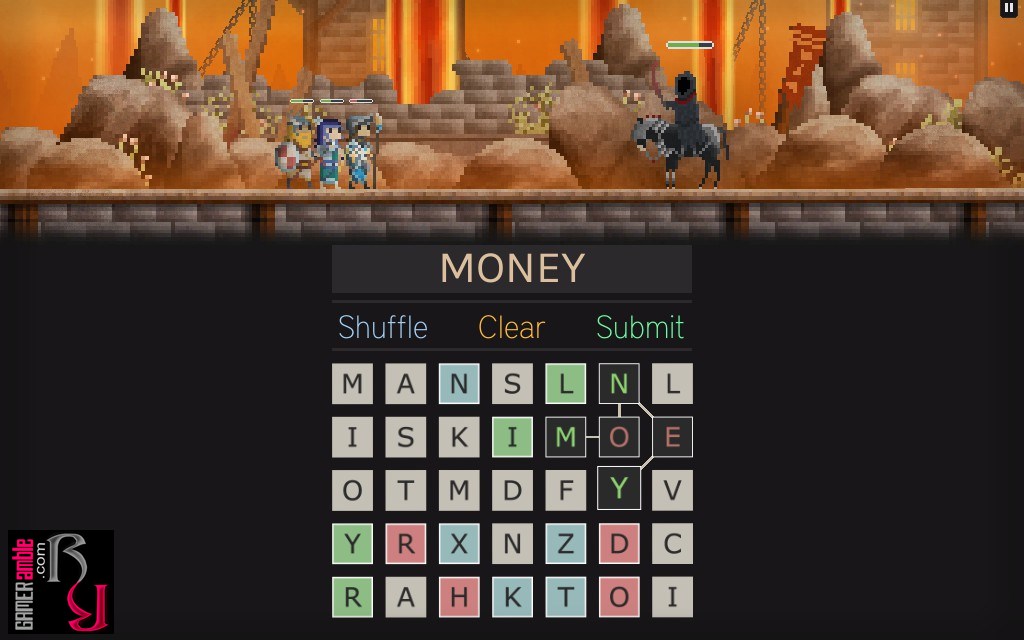Words for Evil
Developer: Dylan Loney | Publisher: Dylan Loney | Release Date: 2014 | Genre: Action / Adventure / Casual / Indie | Website: Official Website | Format: Digital Download
Do you feel like battling monsters, looting chests, dodging deadly traps, and cheating death, but without all the trudging around to solve menial quests for townsfolk? Words for Evil promises to deliver all these fantasy RPG elements but wraps it up in a word game. There isn’t much of a story beyond killing monsters and discovering the books they guard, but that makes the game perfect for playing in short bursts.
Words for Evil takes you through farmlands, ruins, a castle, the outlands, a pass, and even the depths as you use your vocabulary to slay its cast of more than 80 monsters. You get to pick from a small selection of character classes and will encounter more along the way until you have a total of 16 to choose from. They include rangers, river spirits, frost wizards, flame priestesses, high oracles, and other fantasy characters. You can only have a maximum of three party members at a time, so if you encounter anyone new along the way, you might have to drop one of your existing members to make room.
The game is faster-paced compared to similar offerings such as Letter Quest, emphasizing combining words quickly instead of stringing together long ones. During battles, you are provided with a 7X5 letter grid and must then link adjacent tiles together, including diagonal ones, to form words. However, for these words to cause any damage, they must include some of the colored tiles on the board. Each color corresponds to a hero in your party, and the more of these colored tiles you have in the word, the more damage the word will do. This means that one colored tile in the word will activate the basic attack ability of the corresponding hero. Two triggers their strong ability and three or more their ultra-ability. Not all of these abilities are available from the get-go; your heroes must first gain experience and level up before you can boost their abilities.
Combat occurs in real-time, so while you sit and stare at the word grid, your enemy will continue to pummel your characters. If one of your characters takes critical damage, they enter a “last stand” mode where they are given a time limit and a seven-letter anagram to solve in order to cheat death. If you can form a word between three and five letters, the character still dies but manages to damage the monster in the process. A six-letter word restores the character to half of their health, while discovering the complete seven-letter word within the time limit grants the character a return to full health.
Characters who die are removed from your party, and if nobody is left to continue the quest, it is game over. You lose all items and money but can restart the game from the last stage you reached, and characters retain their experience levels and abilities.
In addition to the battles, you will also sometimes encounter loot chests. To open these, you are given five columns and two rows of letters and must find the word that spans both columns. The deadly traps, on the other hand, require you to spell words with the fifteen tiles provided until you run out of options. The tiles don’t have to be adjacent in this mode, but whatever tiles remain after you run out of words are turned into damage against your characters. These little mini-games are fun to play and a nice break from the monster battles. You’ll also encounter vendors selling potions, weapons, and equipment along the way. You can only keep up to three potions in your inventory, and these can only be used before a battle and not during. The weapons and equipment, on the other hand, serve to make your characters stronger. Interestingly enough, the equipment appears to stack, so you can dump all manner of items on one character to boost their attack and defense.
Words for Evil runs on Unity and boasts some lovely pixel art visuals. The game options only allow you to set the screen to thin or wide, but there is no way to play the game in full-screen mode. According to the developer, this was done intentionally and won’t be changed, which can be an issue for players with high-resolution screens. There is also little in the way of animations, but seeing as you’ll be concentrating on the letter grid and not the battle taking place above it, this isn’t too much of an issue. The sheer diversity of creatures you fight is rather nice, and you can also check out all of the ones you have beaten from the “monster library” on the main menu. There are some nice tunes in Words for Evil, and while none of them really stood out, they are catchy enough and fit the game perfectly. Although the game can be played with a mouse, we found the keyboard controls much faster. The game actually does a good job of ensuring that the words you type include as many colored tiles as possible wherever it is possible.
The low price tag on the game makes it an easy impulse buy, and it definitely offers more than a few hours of entertainment. The game’s fast-paced nature means you probably won’t stretch your vocabulary as much as something like Letter Quest or Bookworm Adventures, but the game remains quite addictive.
System Requirements
- OS: Windows XP
- Processor: 2.0 GHz Intel
- Memory: 2 GB RAM
- Graphics: GeForce 8800 or Radeon® HD4800 series, 512 MB
- DirectX: Version 9.0c
- Hard Drive: 500 MB available space
- OS: Windows XP
- Processor: 2.0 GHz Intel
- Memory: 2 GB RAM
- Graphics: GeForce 8800 or Radeon® HD4800 series, 512 MB
- DirectX: Version 9.0c
- Hard Drive: 500 MB available space


